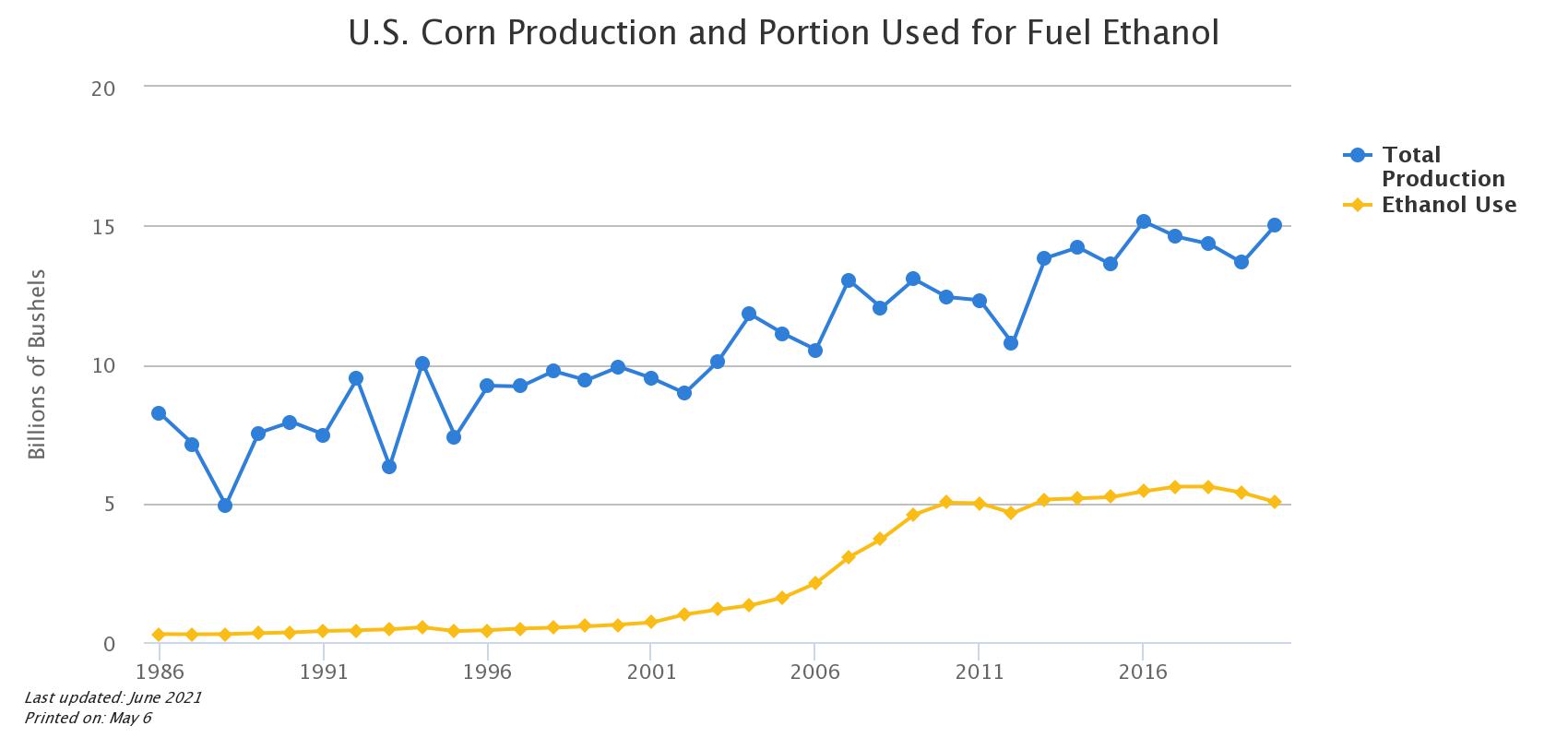
Bryn Huxley-Reicher
Former Policy Analyst, Frontier Group
Former Policy Analyst, Frontier Group
On April 29, the EPA issued a waiver allowing E15 – a mixture of 85% gasoline and 15% ethanol – to be sold throughout the summer in the two-thirds of the country in which it is normally only sold in colder months due to air quality concerns. The EPA anticipates no air quality impacts from the waiver, and claims it could help reduce fossil fuel consumption at a time when oil prices are high, though fewer than 2% of gas stations across the country can even sell E15.
But what is ethanol, and why do we care about it? Ethanol is an alcohol – the same kind as what’s in beer, wine and spirits – made mostly from the sugars and starches of plants, especially corn. Almost all gasoline sold in the U.S. is blended with ethanol, in part because the government has required an increasing volume of so-called “renewable” fuels to be blended into gasoline since 2005 through a law called the Renewable Fuel Standard (RFS). Though the law requires the use of both “conventional” renewable fuels – like ethanol made from corn sugar – and “advanced” fuels – such as those made from waste plant matter – 87% of the RFS has been met with corn grain ethanol.
In 2021, the U.S. consumed 13.9 billion gallons of fuel ethanol, down from a 2019 peak of 14.55 billion gallons. But ethanol may not be as environmentally friendly as lawmakers might have hoped when they passed the RFS.

Source: U.S. Energy Information Administration.
Although the U.S. Department of Agriculture (USDA) asserts that ethanol has much lower greenhouse gas emissions than gasoline, the EPA presents conventional ethanol’s total emissions as uncertain, and a recent study suggests that ethanol may have at least 24% higher emissions than gasoline when accounting for land use change and the increased use of fertilizers, among other effects.
What isn’t debated is the scale of the industry. The U.S. farms over 90 million acres of corn, covering an area slightly smaller than the states of Illinois, Indiana and Ohio combined. Somewhere between 35%-40% of all the corn we produce in this country is turned into ethanol fuel. [1] USDA also acknowledges that much of the 30+ million new acres of corn planted between 1983 and 2010 were for ethanol fuel, including land converted from fallow fields, switched from other crops, and even land that had been part of the Conservation Reserve Program, in which landowners are paid to plant environmentally friendly species and not farm the land.

Source: U.S. Energy Information Administration.
All that land produces very little energy. In fact, according to a 2021 Bloomberg analysis, of the 81 million acres of land area the U.S. energy system uses, 51.5 million are devoted to crops for making biofuels (almost entirely corn ethanol), yet those biofuels provide just 5% of the nation’s energy.
To sum it up: Americans subsidize the production of biofuels on tens of millions of acres of land that could otherwise be used to support conservation or produce food. In return, we likely get more climate change-causing pollution.
After 2022, the EPA will have discretion to set volume requirements for biofuels under the RFS. But other policy changes could make an even bigger difference in reducing our use of corn for vehicle fuel, from changing the ways we get around to expanding our use of renewable electricity and supporting the transition to electric vehicles. Cutting the amount of ethanol going into our cars could also allow us to redirect biofuel supplies to those transportation modes that are hardest to electrify.
Mixing more ethanol into fuel might slightly reduce the amount of gasoline we consume, but given how much of America’s corn goes into our gas tanks, with potentially huge negative impacts on the climate, it’s worth asking whether that’s really such a good idea after all.
[1] 35% is the figure for December 2021-February 2022 according to the U.S. Department of Agriculture’s U.S. Bioenergy Statistics data, downloaded 28 April 2022 at https://www.ers.usda.gov/data-products/u-s-bioenergy-statistics/. 40% is the figure USDA gives on their Feedgrains Sector at a Glance page, accessed 29 April 2022, archived at http://web.archive.org/web/20220427042338/https://www.ers.usda.gov/topics/crops/corn-and-other-feedgrains/feedgrains-sector-at-a-glance/.
Photo credit: Jesse Gardner via Unsplash
